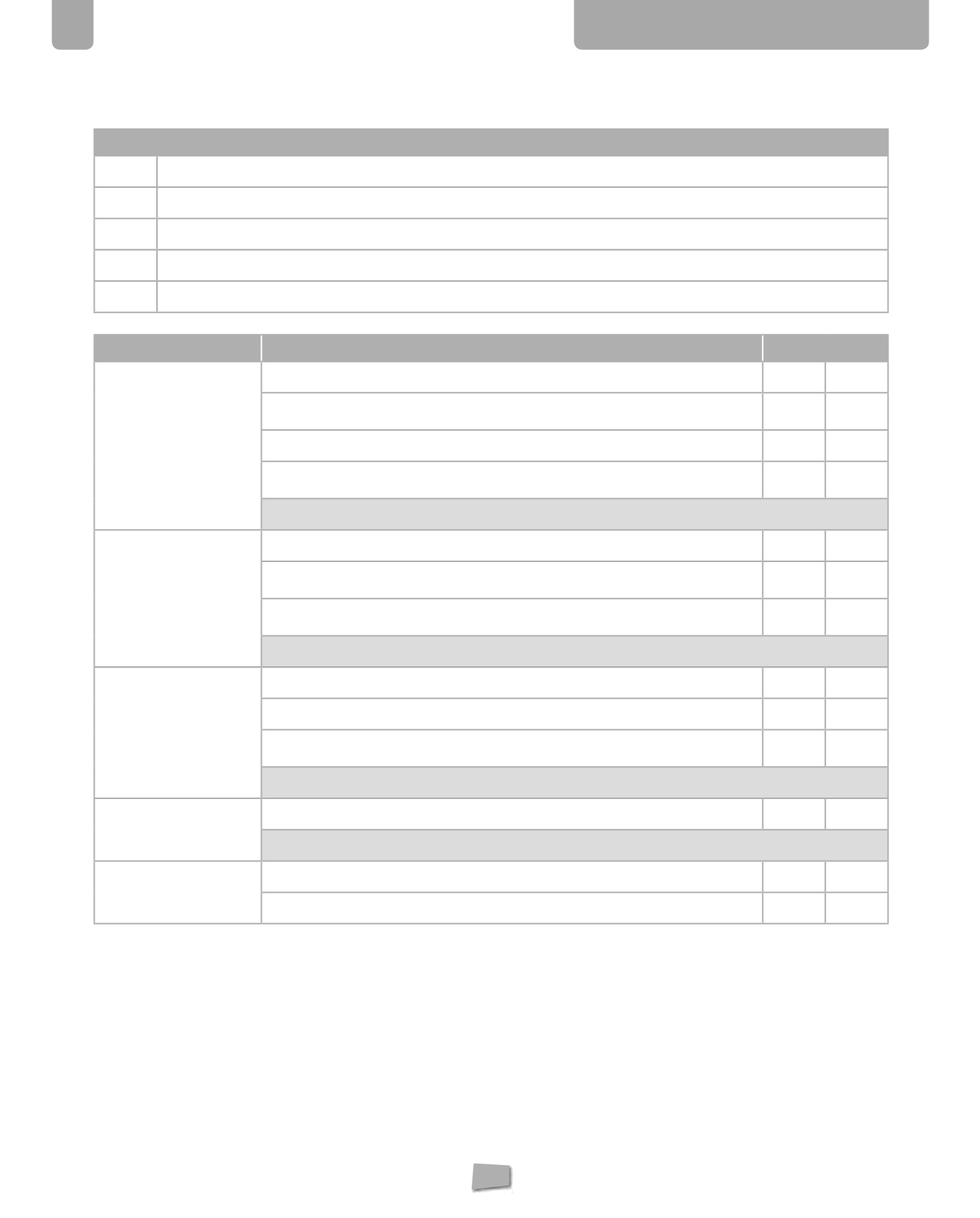
3
The Geosphere
128
OXFORD INVESTIGATION
TYPES OF RESOURCES AND METHODOLOGY USED TO MEET OBJECTIVES
●
Interactive activities. Elaboration and verification of a hypothesis.
❍
Search for information on the Internet.
Watch videos.
❏
Analyse images.
■
Analyse texts (news articles, scientific articles, etc).
SECTIONS
OBJETIVES AND CONTENTS
METHODOLOGY
Minerals
Identify that aligned atomic structures is a property in minerals (crystalline structure).
●
Recognise the two basic characteristics that define a mineral: chemical and structural
composition.
●
Identify mineraloides as solid bodies without a crystalline structure.
●
Recognise the influence that a crystalline structure has on the properties of minerals.
(Diamond/Graphite).
●
Concepts:
mineral, mineraloide, crystalline structure
Rocks
Find out the composition of rocks. Define the concept of rock.
●
Recognise the two basic characteristics that define a rock: mineralogical composition and
texture.
●
Recognise the influence that texture has on the characteristics of rocks
(marble,
limestone).
●
Concepts:
rocks, mineralogical composition, texture
Rocks
Find out the main types of rocks.
❍
Find out the different processes that form rocks.
❍
Recognise the characteristics of rocks for each type (magmatic, metamorphic,
sedimentary).
❍ ❏
Concepts:
classification of rocks, magmatic rocks, metamorphic rocks, sedimentary rocks
Extraction of minerals
and rocks
Find out and identify the main types of mineral extractions
❍
Concepts:
mineral extractions, superficial extractions, subterranean extractions, gravel pits, quarry
Final task
Recognise minerals, rocks and types of deposits
❍ ❏
Analyse the social and environmental impact that could cause the mineral extraction.
■
Objectives, contents and methodology


